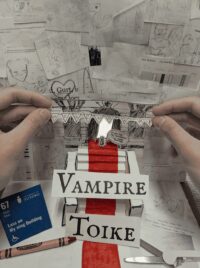Doctors have recently discovered a cabin fever-like condition prevalent in engineering students at the University of Toronto. Named after the atrium in the Sandford Fleming Building, this so-called “Pit Fever” is a physio-psychological condition that is relatively easy to diagnose. In fact, nearly all sufferers of Pit Fever have managed to correctly diagnose themselves through WebMD, Wikipedia, and medical advice from forums such as 4chan.
Pit Fever’s symptoms include but are not limited to: fatigue and weariness; severe headaches; anxiety; dizziness; nausea; heartburn; indigestion; upset stomach; diarrhea; severe alcoholism; poor life choices; vomiting; depression; slurred speech; painful erections that last longer than four hours; hemorrhoids; coughing; general douchebaggery; spontaneous combustion; sneezing; nasal congestion; frequent urination; hallucinations and grandiose delusions; paranoia; excessive sweating; lethargy; glazed eyes; and glass bones and paper skin. Gangrene, necrosis, and an inexplicable hunger for brains have also been reported in some cases. Students should be especially wary of these symptoms during and after F!rosh and Godiva Weeks, as records have shown spikes in Pit Fever around those times of year.
Patients often present with different signs and symptoms, which has made the search for the possible cause(s) of Pit Fever challenging. A common trait among affected patients is spending copious amounts of time in the Pit (up to 30 hours per day). As such, researchers have concentrated their efforts on studying the Pit and the daily habits of the “Pit People”. Pathologists have managed to trace the gastrointestinal symptoms of Pit Fever back to two pathogens: staphylococcus veydacurrius and hardhatomyces peetsae. The origins of these have yet to be determined, but ecologists are collaborating in this research project to study the food sources of the “Pit People” and the Pit’s ecosystem.
A therapeutically efficient drug for Pit Fever has all but eluded pharmaceutical companies, but a promising candidate for market is Aütsyde®. Thus far, the only reported side effects are temporary blindness and skin photosensitivity, which seem to be especially severe for ECE students. Quick to profiteer from the suffering of others, the producers of Aütsyde® have already started developing an advertising campaign for the drug. The slogan? “Get your life back. Go Aütsyde®.”



